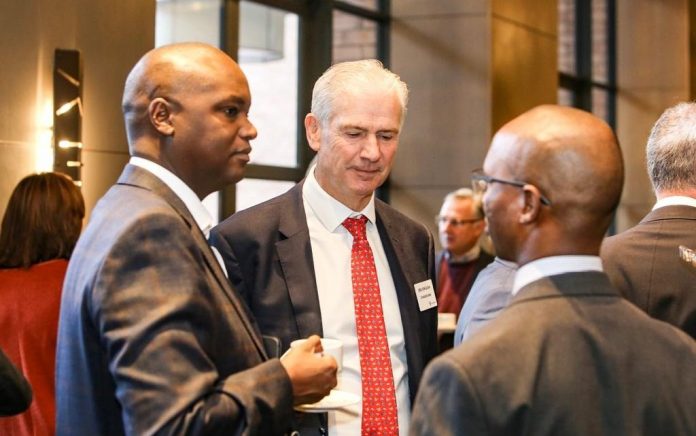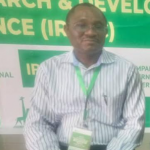East Africa’s highly diversified economies are growing northwards of 6% in a highly integrated regional market which is already attracting significant levels of Foreign Direct Investment (“FDI”) relative to GDP.
Even before the region’s current oil and gas potential is taken into account, Africa’s most dynamic region presents a powerful investment case for South African corporates.
Since most East African domestic content policies set a premium on local business empowerment, the scale of global investment in the region to date offers broader opportunities for growth through local partnerships.
“South African businesses across nearly all sectors have the opportunity to partner with well-capitalized East African firms needing increasingly advanced technical skills and knowledge to grow,” said Patrick Mweheire, Chief Executive for Stanbic Bank Uganda, during the first East African oil and gas summit in Johannesburg South Africa under the theme” getting ahead of the oil and gas opportunity”.
Mweheire delivered the keynote address where he positioned the East Africa region as the next investment frontier for oil and gas. He was speaking to potential investors in South Africa.
“East Africa presents South African corporates an opportunity to diversify out of a persistent low growth domestic environment – by deploying their skills and technology to, for example, leverage a minority interest in high-growth companies rapidly expanding across one of the world’s fastest-growing regions,” he said.
Given the opportunity landscape that has been unfolding in East Africa for over a decade, there is untapped potential for South African Businesses. This will be a key area of discussion that Standard Bank will be working to understand at a gathering of about 160 corporate clients taking place in Johannesburg, this week.
According to Mweheire, there is a need to identify and address any perceived challenges about doing business in East Africa while describing the opportunity from an informed position as a bank long-invested and operational in the region.
East Africa represents one of Africa’s oldest trading areas with a deep history of effective integration having almost formed a customs union in the 1970s.
Latest efforts at integration have seen regional trade and investment reach 30%, the highest in Africa, with goods, services and people moving freely across borders. This is supported by well-integrated and rapidly growing regional standard gauge rail and an expanding road network.
Augmented by a common English and Swahili language East Africa also shares a universal common law-based legal system operating in functioning democracies holding regular elections. The regions’ economies are supported by generally open floating currencies managed by liberal independent central banks.
“East Africa’s economies are supported by capital-friendly and globally-focused governments with the political will to support and increase foreign investment, business growth and deeper regional integration. At the same time, no other African region has so successfully deployed technology to leapfrog the need for legacy transactional infrastructure.
“With internet connectivity and even Wifi widely available across the region, the number of mobile transactions far exceeds traditional bank transfers. This digital economy, literally in the hands of ordinary East Africans, has a huge multiplier effect on business and growth in the regions’ domestic and cross-border economies,” said Mweheire.
Looking ahead East Africa’s coastal markets, especially the connectivity infrastructure they are developing, lends longevity to the regions’ growth proposition.
“Over time, East Africa will become even more relevant, servicing the eight landlocked countries to its west as they seek to access trade and growth opportunities in China and India,” he further explains.
While the region currently sources about US$30 billion from domestic taxes, it has a development financing gap of about US$25 billion. To date, China Exim bank has addressed much of this need at the government-to-government level.
More recently, however, as sovereign debt levels in the region approach 40 to 50% of GDP, opportunities are opening up for private infrastructure investors in public-private partnerships (PPPs).
Unlike government-to-government projects which often exclude smaller and local players, PPPs generally focus on commercially viable projects with strong, cash-generative, business cases.
“These projects are also highly reliant on domestic and other foreign business involvement, support, supply, operation and outsourcing,” observed Mweheire.
“This is where, Standard Bank’s strategic partnership with its majority shareholder, the Industrial and Commercial Bank of China (ICBC), is proving so valuable to our clients as we recognize synergies and jointly seek to link Chinese capital with local and other foreign businesses, skills and operational expertise,” said Mweheire.
While East Africa has long represented diversified services and industrials play, much of the current excitement in infrastructure and logistics is being driven by huge global investment in oil and gas infrastructure.
This is another area where South African corporates become relevant.
“Beyond the hard infrastructure, entire new urban centres and the populations that they will house, feed, clothe, educate, entertain and provide with services represent a huge opportunity for South Africa’s highly diversified industrial and services sector,” said Mweheire.
As a bank long-present and successfully invested in the region, Standard Bank has deep experience in identifying opportunities for clients across multiple sectors and then partnering them on their journeys to successfully leverage East Africa’s broad growth landscape.
As such, Standard Bank’s role at this gathering of 160 South African industrial and service champions is to understand their hurdles and propose solutions that unlock the powerful synergies that exist between Africa’s most developed industrial and services economy and one of the world’s most dynamic growth regions in high demand of exactly this expertise.





















